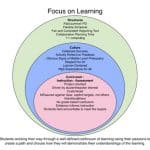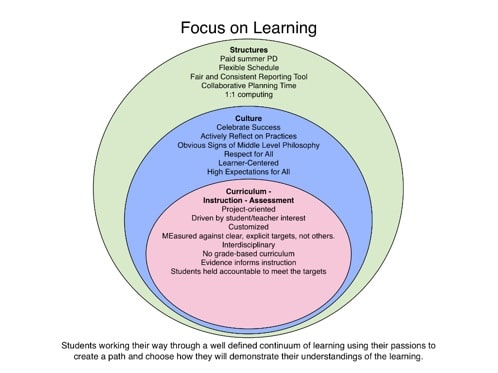Where Are the Bullets?
CompetencyWorks Blog
 Oh the lure of the quick fix. Humans are fascinated with them. Without this attraction, con artists and snake oil salesmen would not be viable professions. We see the desire to solve something quickly in the hero who simply needs to make a single correct decision, and the world is saved.
Oh the lure of the quick fix. Humans are fascinated with them. Without this attraction, con artists and snake oil salesmen would not be viable professions. We see the desire to solve something quickly in the hero who simply needs to make a single correct decision, and the world is saved.
I recently watched a special commemorating the 40th anniversary of the Immaculate Reception by Franco Harris. The host suggested the amazing play led to the Pittsburgh Steelers’ dominance in the 1970s. I am pretty sure, however, that the catch did not cause a giant shift in the cosmos allowing for the Steelers to win four Superbowls. In fact, it was a team effort. After all, they did have a defensive line referred to collectively as the Iron Curtain.
It does make for a good story though.
In education, we too are susceptible to the hunt for the one right answer. “This program will raise test scores; all you need to do is have students write more; we need Singapore math; STEM is the key.” While all of these are legitimate arguments for how we can improve instruction, they are only a piece in how we improve learning. Educators need to stop seeking the “Silver Bullet.” It does not exist.
Instead, we need to do the slow and sometimes painful work of developing and effectively executing a strategy. Competency-based education, or Customized Learning, is not an “it” that comes in an easy to install program packet. It requires a shift away from the status quo. What worked for us in my school and district was this:
A process of facilitated conversations amongst all stakeholders that led to the establishment of a philosophical lens through which all decisions pass.
Those that pass are implemented; those that do not are dismissed or adjusted. I will break the statement down into sections to better clarify:
- Process: The strategy should include well scripted actions that help to move your school or district closer to your vision.
- Facilitated Conversations: It is important– almost critical– to use individuals from outside the district who have expertise in leading change. My district has been partnering with the Re-Inventing Schools Coalition (RISC) for the past four years.
- All Stakeholders: All people who have an investment in the school need to have their voices heard and offer input into the direction of the system. The decisions should not be driven by people who lack expertise to make the informed choices, but they all should have an input into the bigger picture.
- Philosophical Lens: By gathering the input from the stakeholders, a shared vision of what the perfect school or system looks and sounds like should be created.
- Decisions are Passed: When we make a decision for how we will proceed to overcome an identified challenge, we must pass the decision through our lens. If it does not make it through, we seek another solution. Only those things that line with our beliefs are implemented.
In my middle school, our shared vision is “Focus on Learning.” It is a simple phrase but has large implications. The recent challenge came when we reviewed the way we deal with students when poor behavior choices are made. We discussed that if we simply issue detentions to be served after school on Tuesdays and Thursdays with a detention monitor, we are not helping students “learn” how to make pro-social behavior choices. We are simply punishing them.
We created a response ladder for teachers, which includes facilitating conversation, meetings, and phone calls home before getting to the level of detentions and office referrals. This way we put our focus on what we want.
To aid in our understanding of what it means for the classroom, we expanded our vision to include: “Students working their way through a well-defined continuum of learning using their passions to create a path and choose how they will demonstrate their understanding of the learning.” We want students to have choice within their zone of proximal development as to how they will demonstrate their learning. Our lens now has three parts: structures, culture, and curriculum:
Getting to a shared vision is not easy nor quick. It takes time, patience, and support from people who ask the right questions. It paid off. Implementing the vision in a way that respects the gathered data proved to be even trickier, however. With the right facilitation, scripting the critical moves to help you reach your vision is possible to improve learning for all. It may not be a Silver Bullet, but it will do more for learners in your district than the kick fix. Take your time and enjoy the process. It is the only way.
Nina Lopez is an independent consultant, based in Boulder, CO. Nina provides facilitation, strategy and innovation design services to private foundations, non-profit and government entities in Colorado and throughout the country to help them incubate new initiatives, develop a shared vision and a clear strategy for achieving individual and collective goals. www.ninalopez.com
